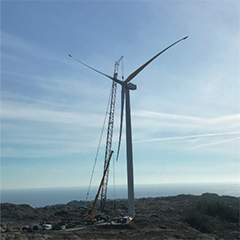With increasing competitiveness of renewable energy compared to traditional forms of power production, Power Purchase Agreements are becoming attractive for both off-takers as well as power producers. However, PPAs bring along a new risk dimension requiring profound expertise in the wind energy business. Theresia Langosz-Römbell, Organisation Development, CSR & Communications Manager at Luxcara, provides PES with a glimpse into the new, wind energy world.
It is no new story that wind conditions are even more difficult to predict than sun-shine. So far, under the feed-in tariff (FiT) or similar subsidised schemes, no target amount of produced energy was agreed. Strong wind leading to a peak in production did not cause any substantial problems in terms of remuneration.
Since the FiT was guaranteed by national governments, the additional power was taken off with the same conditions as the average amount. And even short-term underperformance was no real cause for worry, as nobody relied on this specific amount of renewable energy. That is
until now.
We are leaving the FiT times behind. European countries are substantially reducing subsidisation. Leaving aside auctions ending at a price of zero, Spain is in the process of abolishing all kinds of subsidies of renewable energy. We are entering the age of Power Purchase Agreements (PPA), and here, the story is different.
There are basically two different types
of PPA:
1
Fixed-volume PPA’s specify an amount of energy, which is delivered to the off-taker
2
In as-produced PPA’s, the whole amount of generated power is taken off
These two types make up the majority of PPA’s closed. If the power is actually produced on-site within a so-called physical PPA, the power delivery happens without use of the public grid. This is, however, a rare case.
A typical off-taker in a PPA is a large corporation, for example Google or the aluminium company Alcoa Norway. With a fixed-volume PPA, the off-taker relies on the agreed amount of energy to be delivered. The PPA holds the power producer accountable to the delivery obligations within a short timeframe.
In blunt terms: If you do not deliver the agreed amount of energy, you’ll pay twice. Not only do you miss your revenues, but you have to buy the corresponding amount of energy, which you were not able to produce yourself, at the spot market for the current market price in order to fulfil your delivery obligations. As this can cost dearly, it is of utmost importance to make reliable predictions within a fixed-volume PPA. First of all on wind conditions, but also on other factors which affect the power generation, like turbine performance and instabilities in the grid.




























